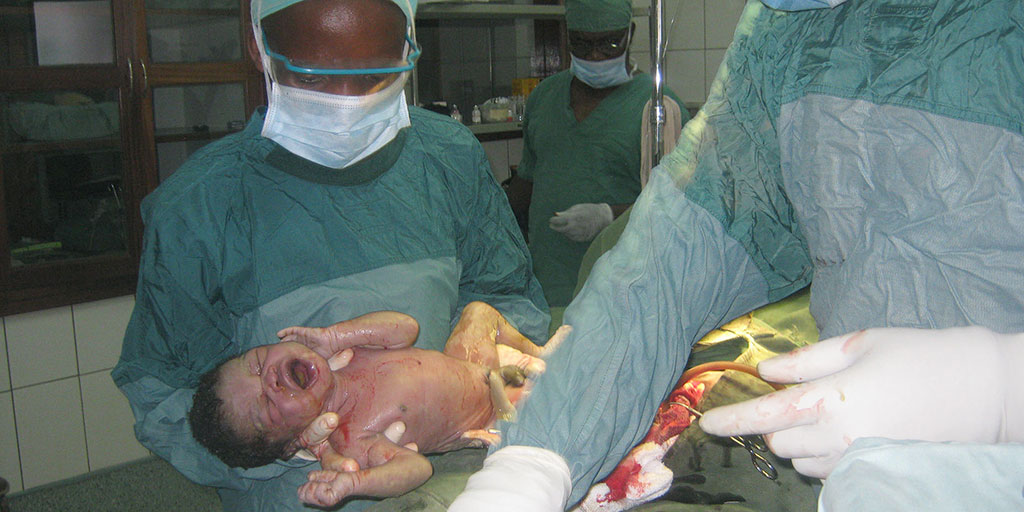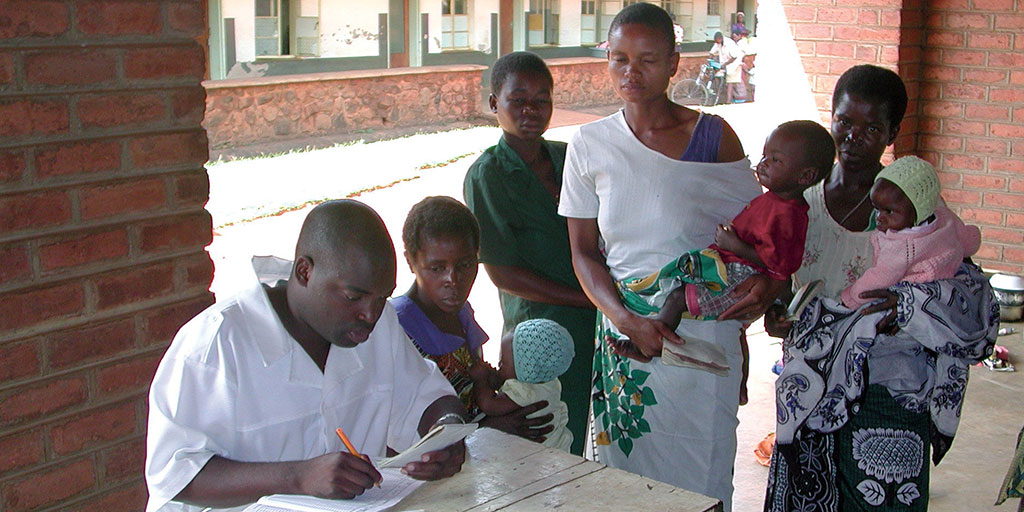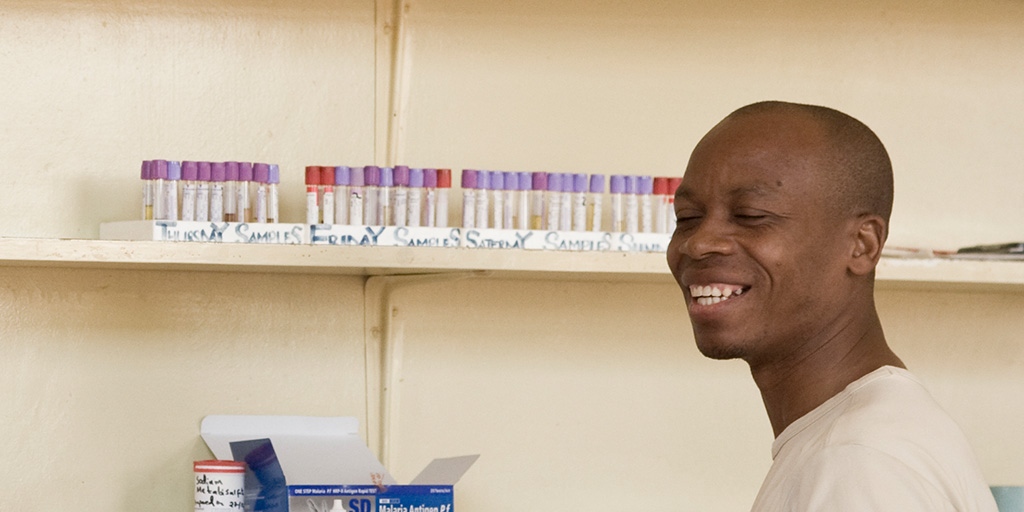Duties and benefits

New born in the Operating Theatre – 12th November 2012
In essence, the function of the hospital is defined by four contracts. The three medical tasks are to offer therapeutic medical services as well as prevention and medical education (nursing school).As the largest employer in the reagion, there is also an economic benefit to the local people.
Therapeutic Medicine
Today the hospital offers approximately 220 beds, half of which are occupied by patients of the maternity ward. The other inpatients are distribuited among the children's, women's and men's wards. The clinical diagnosis is supplemented by a small laboratory, a simple x-ray machine and an ultrasound machine. In the small operating theatre there are primarily obstetrics procedures performed unless there are surgeons present who can perform larger operations. In the ambulatory section each year up to 30'000 patients are seen with infectious diseases being most prevalent (malaria, tuberculosis, aids etc.).
Preventive Medicine
 Prenatal care, immunization program for infants and family planning are just some of the activities that are offered by the hospital internally and externally. In the medical department there is a separate section that looks after the specific needs of the Primary Health Care Program (PHC).
Prenatal care, immunization program for infants and family planning are just some of the activities that are offered by the hospital internally and externally. In the medical department there is a separate section that looks after the specific needs of the Primary Health Care Program (PHC).
Training assignment
Of course, in addition to the operation of the nursing school there are further needs of training of other employees of various departments. For example, this incorporates special training programms which expand the knowledge of the medical and nursing staff. On the other hand there are specific educational programms for individual employees. Among others there was one medical assistant who recieved an ophthalmic training and another was retrained as an anesthesia aid. In addition a number of guests are constantly in the hospital to get further education for their later assignment in a rural health centre.
The Phalombe hospital as an employer
 The hospital incorporates a medical, administrative and a nursing department. In addition there is the school with separate accounting. A total of over 200 employees are working in the four departments. Depending on the season and ongoing projects there are a few dozen temporary laborers employed additionally. The daily schedule of the hospital is provided by the Hospital Management Committee (Hospital Board), which meets every 14 days for a meeting. Part of which are the chief of departments, the accountant and a representative of the nuns. A director oversees the activities of the Hospital Management Committee.
The hospital incorporates a medical, administrative and a nursing department. In addition there is the school with separate accounting. A total of over 200 employees are working in the four departments. Depending on the season and ongoing projects there are a few dozen temporary laborers employed additionally. The daily schedule of the hospital is provided by the Hospital Management Committee (Hospital Board), which meets every 14 days for a meeting. Part of which are the chief of departments, the accountant and a representative of the nuns. A director oversees the activities of the Hospital Management Committee.
